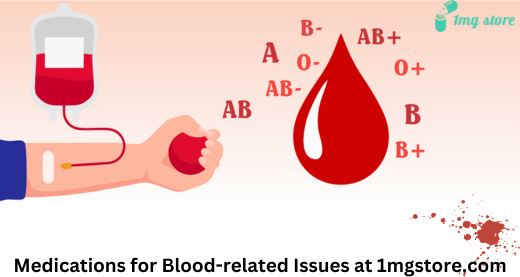
Blood
What is Blood?
Blood is essential to life. Blood flows through our body and supplies necessary elements like oxygen and nutrients to the body’s cells. It also transports metabolic waste products down from those same cells. There's no substitute for blood. It cannot be made or manufactured. Substantial blood donors are the simply source of blood for patients in essential of a blood transfusion.
Blood Components
There are four introductory components that comprise mortal blood plasma, red blood cells, white blood cells and platelets.
Red Blood Cells
Red blood cells signify 40-45 of your blood capacity. They're created from your bone marrow at an amount of four to five billion per hour. They've a lifecycle of about 120 days in the body.
What Are Red Blood Cells?
Red blood cells are round with a flattish, depressed center, like doughnuts without a hole. Your healthcare supplier can check on the size, shape, and health of your red blood cells by a blood test.
Red blood cells at work
Hemoglobin is the protein inside red blood cells. It carries oxygen. Red blood cells similarly remove carbon dioxide since your body, carrying it to the lungs for you to exhale.
Red blood cells are complete in the bone marrow. They generally live for about 120 days, and also they die.
Nutrition and red blood cells
Nutrition rich in iron support you continue healthy red blood cells. Vitamins are also demanded to make healthy red blood cells. These include vitamins B-2, B-12, and B-3, plant in foods similar as eggs, whole grains, and bananas. Folate also helps. It's plant in fortified cereals, dried beans and lentils, orange juice, and green lush vegetables.
Platelets
Platelets are an amazing part of your blood. Platelets are the lowest of our blood cells and literally look like small plates in their non-active form. Platelets control bleeding. Wherever a wound occurs, the blood vessel will shoot out a signal. Platelets admit that signal and travel to the area and transfigure into their “active” formation, growing long tentacles to make contact with the vessel and form clusters to plug the wound until it heals.
What makes platelets change their shape?
Platelets, the lowest of our blood cells, can only be seen under a microscope. They’re literally shaped like small plates in their non-active form. A blood vessel will shoot out a signal when it becomes damaged. When platelets admit that signal, they’ll respond by traveling to the area and transubstantiating into their “active” formation. To make contact with the broken blood vessel, platelets grow long tentacles and also act a spider or an octopus.
What's a healthy platelet count?
A normal platelet count ranges from to platelets per microliter of blood. Having further than platelets is a condition called thrombocytosis; having lower than is known as thrombocytopenia. You develop your platelet quantity from a routine blood test called a complete blood count (CBC).
Plasma
Plasma is the liquid portion of your blood. Plasma is unheroic in color and is made up substantially of water, but it also contains proteins, sugars, hormones and salts. It carriages water and nutrients to your body’s tissues.
What's plasma in mortal body?
Plasma is the largest part of your blood. It makes up further than half (about 55) of its overall content. When separated from the rest of the blood, plasma is a light unheroic liquid. Plasma carries water, salts and enzymes.
Where is plasma plant in the body?
Plasma is the liquid part of your blood. You might have caught of red blood cells, white blood cells, and platelets. Then plasma is similarly part of your blood.
Why do people contribute plasma?
Blood plasma donations are used for somewhat further exact purposes than a general blood donation. The most common uses of plasma donations include individuals who have endured a severe trauma, burn or shock, adults or children with cancer, and people with liver or clotting factor disorders.
White Blood Cells
Although white blood cells (leukocytes) only regard for about 1 of your blood, they're veritably important. White blood cells are necessary for good health and safety against sickness and disease. Similar to red blood cells, they're always existence generated from your bone marrow. They stream through the bloodstream and attack foreign bodies, like infections and germs. They can indeed leave the bloodstream to extend the fight into tissue.
What Are White Blood Cells?
Your white blood cells regard for only about 1 of your blood, but their impact is big. White blood cells are also called leukocytes. They cover you against illness and disease.
Suppose of white blood cells as your immunity cells. In a sense, they're always at war. They flow through your bloodstream to fight viruses, bacteria, and other foreign invaders that hang your health. When your body is in distress and a particular area is under attack, white blood cells rush in to help destroy the dangerous substance and help illness.
White blood cells are complete in the bone substance. They're put in storage in your blood and lymph soft tissue. Because some white blood cells called neutrophils have a short life lower than a day, your bone marrow is always making them.
Types of white blood cells
Among your white blood cells are
- Monocytes. They've a longer lifespan than numerous white blood cells and help to break down bacteria.
- Lymphocytes. They produce antibodies to fight against bacteria, viruses, and other potentially dangerous invaders.
- Neutrophils. They kill and digest bacteria and fungi. They're the most multitudinous type of white blood cell and your first line of defense when infection strikes.
- Basophils. These small cells feel to sound an alarm when contagious agents foray your blood. They cache chemicals similar as histamine, a marker of antipathetic disease, that help control the body's vulnerable response.
- Eosinophils. They attack and kill parasites and cancer cells, and help with antipathetic responses.
Blood is a vital and complex fluid that circulates throughout the human body, playing a crucial role in maintaining various physiological functions. Composed of cells, plasma, and platelets, blood serves as a transportation system for oxygen, nutrients, hormones, and waste products. Understanding its components and functions provides insights into the intricate workings of the human body.
Key Components of Blood:
1. Red Blood Cells (RBCs):
- Function: RBCs, or erythrocytes, are responsible for transporting oxygen from the lungs to tissues and removing carbon dioxide for excretion.
- Hemoglobin: These cells contain hemoglobin, a protein that binds to oxygen and gives blood its red color.
2. White Blood Cells (WBCs):
- Function: WBCs, or leukocytes, play a vital razole in the immune system by defending the body against infections and foreign invaders.
- Types: There are several types of white blood cells, including neutrophils, lymphocytes, monocytes, eosinophils, and basophils.
3. Platelets:
- Function: Platelets are essential for blood clotting and the prevention of excessive bleeding. They adhere to damaged blood vessels, forming clots to stop bleeding.
4. Plasma:
- Composition: Plasma is the liquid component of blood, comprising water, electrolytes, proteins, hormones, and waste products.
- Transport: Plasma transports nutrients, hormones, and waste products throughout the body, facilitating communication between organs and tissues.
Functions of Blood:
1. Oxygen Transport:
- From Lungs to Tissues: Red blood cells carry oxygen from the lungs to tissues and organs, supporting cellular metabolism.
2. Nutrient Transport:
- Digestive Absorption: Nutrients absorbed from the digestive system are transported in the blood to various cells for energy production and cellular functions.
3. Waste Product Removal:
- Excretion: Blood carries waste products, such as carbon dioxide and urea, from cells to organs like the lungs and kidneys for elimination.
4. Immune Response:
- White Blood Cells: The immune system, facilitated by white blood cells, defends against infections and foreign substances, contributing to overall health.
5. Hormone Transport:
- Endocrine Communication: Hormones produced by endocrine glands are transported in the blood to target organs, regulating various physiological processes.
6. Temperature Regulation:
- Heat Distribution: Blood helps regulate body temperature by distributing heat produced by cellular activities throughout the body.
7. Clotting and Hemostasis:
- Platelet Function: Platelets play a crucial role in forming clots to prevent excessive bleeding, ensuring vascular integrity.
8. pH Regulation:
- Buffer Systems: Blood contains buffer systems that help maintain a stable pH, ensuring optimal conditions for enzymatic activities.
- Blood Types: Blood is classified into different types based on the presence or absence of specific antigens and antibodies. The ABO system and the Rh factor determine blood types, including A, B, AB, O, and Rh-positive or Rh-negative.
Conclusion:
Blood is a dynamic and essential fluid that sustains life by facilitating the transport of oxygen, nutrients, and waste products, supporting the immune system, and maintaining homeostasis. Its intricate composition and functions highlight the intricate design of the human body, where the continuous circulation of blood ensures the proper functioning of organs and tissues. Understanding the roles of blood components contributes to advancements in medical science and healthcare, ultimately improving our ability to diagnose and treat various health conditions.


